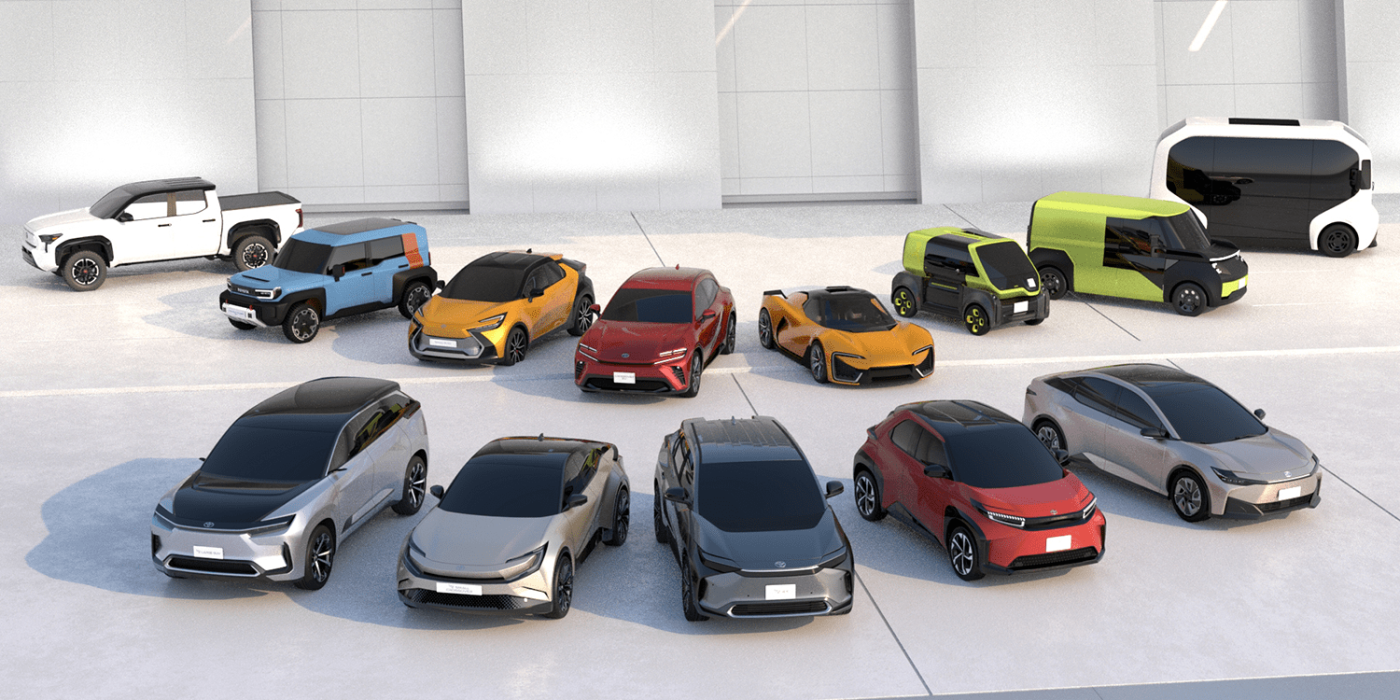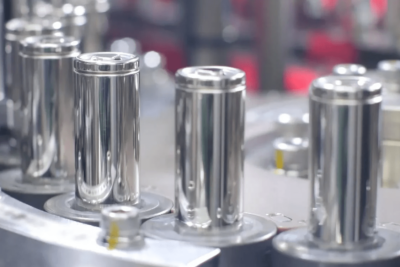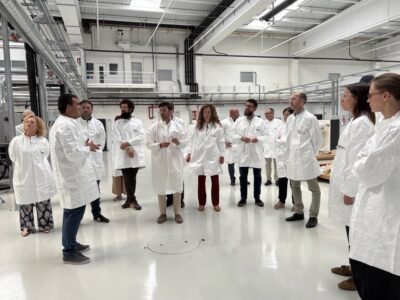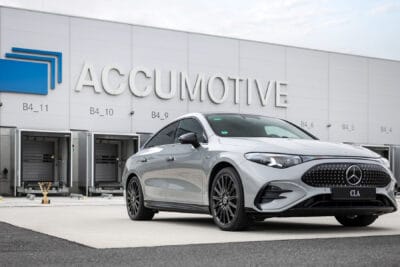Debunking Toyota: The BEV strategy of the world’s largest car manufacturer
There is no shortage of news about miracle batteries, but when the world’s largest car manufacturer announces one, the industry pricks up its ears. Toyota promises to halve the size, weight and cost of traction batteries. Is that realistic or is the Japanese company merely bluffing?
***
There is currently only one available BEV in Toyota’s showrooms in Germany: the bZ4X. Toyota certainly did not pour a lot of love into the SUV. For example, the maximum charging power could not be reached reliably. A problem that was reduced with an update. However, a route planner that includes preconditioning, which is the minimum standard for a contemporary BEV, is still not available. The bZ4X, skilfully designed in principle, conveys a clear message: we could if we wanted to. But we don’t really want to…yet.
In all fairness: the Lexus RZ450e on the same basis will follow shortly. Theoretically, there is also the UX300e, which unfortunately remains a theory because of the CHAdeMO plug.
Toyota previously announced that it will soon offer many more BEV models. The promising bZ3 sedan, for example, like the technically similar BYD Seal, comes to us with an 800-volt system and LFP cells in a cell-to-body design. The Japanese company likes to have things under control. It is, therefore, safe to assume that the bZ3 is not simply a BYD Seal with a different body, but that Toyota will have spent a great deal of effort on development, design and production.
The question remains: Where does that leave Toyota? What is the world’s largest carmaker BEV strategy?
Stretched interpretation of reality
Keiji Kaita, president of the Research and Development Centre for CO2 Neutrality, told the Financial Times that “for both our liquid and solid-state batteries, we are aiming to drastically change the situation”. They would be “too big, heavy and expensive”. “In terms of potential, we will aim to halve all of these factors.” This prediction was coupled with the promise of being able to achieve 1,000 kilometres of range and ten minutes of charging time in the future. “Never underestimate Toyota”, tweeted German-British analyst Matthias Schmidt.
A closer look at Keiji Kaita’s statements, however, leaves little to go on. It is a popular and pointless game of the car industry to make comparisons like the mentioned halving in size, weight and costs without giving an original value. We need concrete figures, and we are not getting them.
At least there are figures for the range: 1,000 kilometres are considered possible – values that are unquestionably based on today’s traction batteries. In Japan, it is practically forbidden to drive faster than 100 km/h almost anywhere. As a result, the WLTP was adapted accordingly. And whether the 1,000 kilometres refer to the standard cycle or an ideal constant speed (Toyota refers to “cruising range”) is unclear. With an imaginary 120 kilowatt-hours and twelve kilowatt-hours of electricity consumption under optimal conditions, this distance is already feasible, albeit a far-stretched interpretation of reality. Nothing about it is record-breaking or indicative of a breakthrough.
Unclear benchmarks
Furthermore, the definition of ten minutes of charging time also lacks context. Should it be ten minutes for a charging stroke from ten to 80 per cent SOC: CATL from China recently demonstrated exactly that for the Qilin battery, and the enabler for this short time is not exotic cell chemistry, but an extremely efficient cooling and heating system. The Qilin battery system recently went into production.
Toyota has not come up with an outstanding comparable innovation. However, expectations are high: the company is known for perfecting production – and for its very extensive experience in handling the buffer batteries in over 20 million hybrid cars. No one in the industry has such a long and extensive learning horizon.
What Toyota is really up to is revealed in a general announcement published in June. When reading it, disillusionment sets in – not in the sense of disappointment, but in the sense of confrontation with reality. Toyota’s reality is hardly any different from that of its competitors.
Toyota in the middle
The charging period from ten to 80 per cent SOC takes about 30 minutes for the Toyota bZ4X. From 2026, this value will drop to 20 minutes for the same chemistry (prismatic NMC cells). This seems far more feasible than the simultaneously claimed doubling of range, which could plausibly only be achieved via a much larger traction battery overall via better packaging in the same installation space.
In 2027, low-cost LFP cells will follow, which will need 30 minutes for the comparison charge. In 2028, the range, which has doubled compared to the current bZ4X, will be increased by another ten per cent. The reason for this is a cell chemistry with an even higher nickel content, for example, NMC955 (for a cathode mixture of 90 per cent nickel and five per cent each manganese and cobalt).
All these values – if they are expressed in concrete figures and not comparisons – are merely average. Not particularly good: Hyundai’s e-GMP with its 800 volts system comes to 18 minutes. Not particularly bad: some Chinese electric cars need 45 minutes or more. Toyota is simply the conservative middle.
Solid state or only semi-solid state?
Toyota is particularly cautious in its formulations about solid-state batteries. They are aiming for series production in 2027/28. Costs are also “under review”, the carmaker says, not-so-subtly implying that the costs are still too high. And the increase in range compared to a cell chemistry with a high nickel content is apparently only ten per cent. The researchers claim progress in the charging time of ten minutes “or less”.
Recently, Toyota has said that it wants to install potential solid-state batteries not only as buffer storage in hybrid cars, but also in BEVs. It remains to be seen whether this will be a true solid-state battery with a metallic lithium anode or semi-solid-states with a gel or soft powder as the electrolyte. Only the pure lithium anode with an actual solid electrolyte allows the potential of this type to be released, as experts point out in background discussions. Industry circles tend to assume that Toyota will use semi-solid-state.
The world market leader allows this hesitation for different reasons. First of all, it is crucial to understand that Toyota strongly identifies with and plans around the Japanese market. Here, the share of BEVs in terms of new cars is only around two per cent due to a lack of subsidies. In Europe, on the other hand, Toyota is the only manufacturer that succeeds in meeting the fleet limits almost without BEVs by reducing CO2 emissions from cars with internal combustion engines. This will change in the near future, but for the time being, mass sales of hybrid cars are still enough to easily comply with all relevant CO2 regulations.
Gigacasting like Tesla
On the other hand, Toyota reveals that Tesla has become a role model for the Japanese company: the next BEV generation (from 2026) will be partly produced by “gigacasting”. In this process, structural components at the front and rear, which used to be assembled from many individual parts, come out of the machine in a single aluminium casting. This speeds up production and lowers costs.
In December 2021, Akio Toyoda presented a whole armada of electric cars. However, little has happened since. But no one should be under the illusion that this cannot change. Toyota will continually build more electric cars. The total number of units will likely be in the bottom third of the car industry in the medium term. Hopefully, these electric cars will live up to the brand’s reputation. They don’t have to be an S3XY, but solid, reliable and affordable.
Reporting by Christoph M. Schwarzer





3 Comments